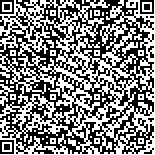| 摘要: |
| [摘要] 目的 探讨CC族趋化因子受体9(CCR9)在非小细胞肺癌(NSCLC)肿瘤免疫机制中的作用。方法 采用流式细胞术检测42例NSCLC患者和30名健康人手术前后T细胞亚群以及外周血中CD4+ T淋巴细胞表面CCR9的表达情况,计数各组细胞表达的百分率。免疫磁珠分选外周血CD4+ T淋巴细胞,采用transwell实验检测并分析CCL25/CCR9对CD4+ T淋巴细胞迁移的影响。结果 NSCLC患者外周血T淋巴细胞亚群均降低,术后外周血CD4+ T淋巴细胞、CD4+/CD8+比值均明显高于术前[(49.11±8.32) vs (46.17±8.71),P=0.031和(1.66±0.09) vs (1.44±0.06),P=0.001];术前CD4+CCR9+ T淋巴细胞的百分率低于术后[(3.33±1.11) vs (6.57±1.92),P<0.05]和健康对照组[(3.33±1.11) vs (11.06±1.37),P<0.05]。在CCL25诱导下,NSCLC患者外周血CD4+ T淋巴细胞趋化指数(CI)为3.14,明显低于健康对照组的3.83(P<0.05)。经过anti-CCR9单抗处理后,CD4+ T淋巴细胞的CI为0.62,与未经anti-CCR9 mAb处理者相比明显降低(P<0.05)。结论 NSCLC患者外周血T淋巴细胞调节机制紊乱,CL25/CCR9相互作用可介导外周血CD4+ T淋巴细胞迁移,NSCLC患者外周血淋巴细胞中CCR9低表达,影响淋巴细胞迁移,可能与肿瘤逃避免疫监视的机制有关。手术可以逆转CD4+ T淋巴细胞表面CCR9的表达变化,CCR9可能作为评价肺癌治疗后免疫重建的指标。 |
| 关键词: 非小细胞肺癌 趋化因子受体 CD4阳性T淋巴细胞 T细胞亚群 趋化性 |
| DOI:10.3969/j.issn.1674-3806.2014.04.02 |
| 分类号:R 54 |
| 基金项目:广西科学研究与技术开发计划项目(编号:桂科攻0816004-8) |
|
| Expression of CCR9 on peripheral blood CD4+ T lymphocytes in non-small cell lung cancer patients and its chemotactic activity |
|
ZHONG Yong-long, LIN Hui, LAN Jiao, et al.
|
|
Department of Cardiothoracic Surgery, the People′s Hospital of Guangxi Zhuang Autonomous Region, Nanning 530021, China
|
| Abstract: |
| [Abstract] Objective To investigate the expression of CC chemokine receptor 9(CCR9) on peripheral blood CD4+ T lymphocyte cells of non small cell lung cancer(NSCLC), and the effect of CCR9 and its ligand(CCL25) on peripheral blood CD4+ T lymphocytes.Methods The study was performed in 42 NSCLC patients and 30 healthy controls. Flow cytometry was employed to detect the T lymphocyte subsets and the expression of CCR9 on peripheral blood CD4+ T cells. Peripheral blood CD4+ T lymphocytes were isolated from all cases with magnetic-activated cell sorting method. The cell trans-membrane test with 24-transwell was used to detect the effect of CCR9/CCL25 on the lymphocyte migration.Results Compared with control group, the T lymphocyte subsets in pre-operative patients were higher than that in post-operative patients(P<0.05). The frequency of CD4+CCR9+ T lymphocyte in pre-operative group was both significantly decreased compared with post-operative group(3.33±1.11 vs 6.57±1.92,P<0.05) and controls(3.33±1.11 vs 11.06±1.37,P<0.05). In the induce of CCL25, the chemotactic indexes(CI) of CD4+ T lymphocytes from NSCLC patients(3.14) was significantly lower than that from healthy persons(3.83). After anti-CCR9 mAb pretreatment, the lymphocytes CIs of NSCLC patients decreased significantly to 0.62 as compared with untreated controls.Conclusion The expression of CCR9 is down-regulated on NSCLC peripheral blood CD4+ T lymphocyte cells. CCR9/CCL25 interactions mediate the migration of CD4+ T lymphocytes in bodies. The decreased expression of CCR9 in the CD4+ T lymphocytes of patients with NSCLC could effect the ability of lymphocytes migration, which might involve in the mechanisms of tumor escape immune surveillance. Operation could reverse the change of CCR9 expression on CD4+ T lymphocyte cells. CCR9 may be suggested to indicate immunologic reconstitution after therapy and operation. |
| Key words: Non small cell lung cancer Chemokine receptor CD4-positive T-lymphocyte T lymphocyte subsets Chemotaxis |

